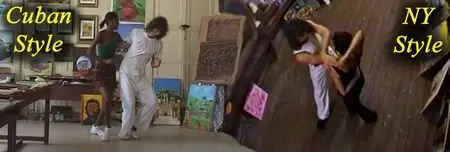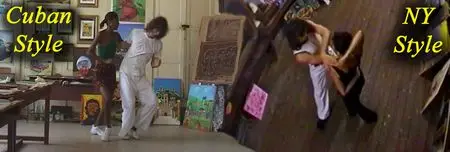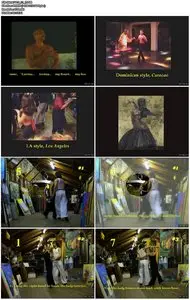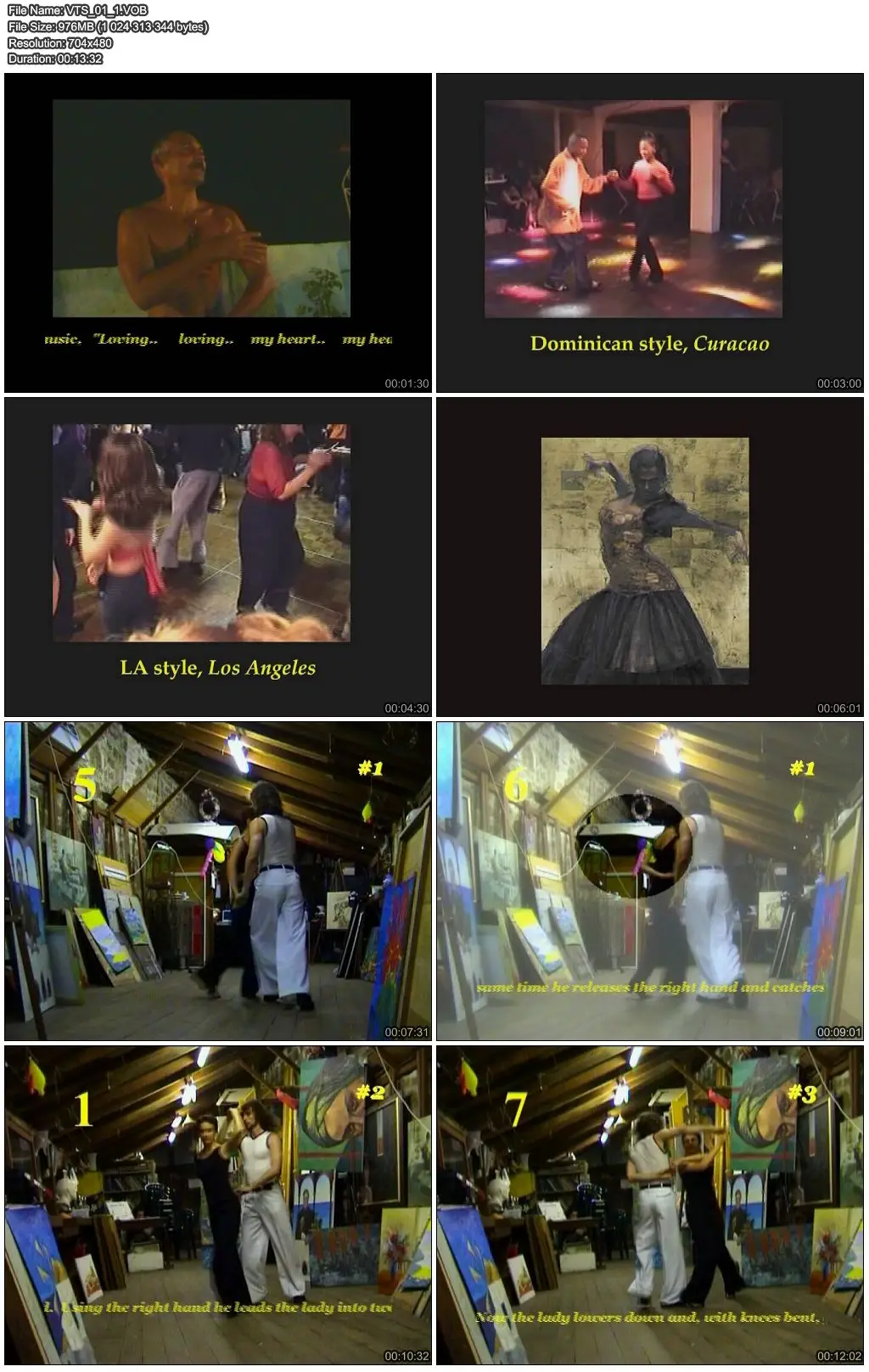Advanced Figures in NY/LA & Cuban Style
DVD5 | 2004 | DVD video | MPEG2 | 720х480 | 29.97 fps | PCM, 1536 kbps
Language: English | Run Time: 70 minutes | 3.28 GB
DVD5 | 2004 | DVD video | MPEG2 | 720х480 | 29.97 fps | PCM, 1536 kbps
Language: English | Run Time: 70 minutes | 3.28 GB
This video is about exploring the different styles in which salsa is danced.
Knowing many styles adds to the repertoire of emotions and expressivity you can incorporate into your dance. Don't make the salsa style you know best determine how you dance. Make the music and your mood determine which style you dance and how you dance it.
This video aims to help you to achieve this. We will show you 15 moves, and demonstrate them in both NY-LA style (slot style) and in Cuban style (on a circle). We will show you that it is very easy to adapt moves to different styles. All that is needed is to change the structure of the dance in the way the dancers relate to one another.
Each routine is first shown in NY/LA style. The ideas contained in the routine are then broken down and explained individually. The routine is then reassembled and showed in Cuban style.
In order to maintain consistency and to make it easier to transfer from one style to another, all moves are danced on '1', independent of the style.
A crucial feature of this video is the use of the salsa time counting on the top left. Make use of it to time your figure properly. The counting is particularly useful in the slow motion sections.
Before we go into the main content of this video, it is useful to say a few words on the difference between NY/ LA salsa and Cuban salsa.
The most obvious is that NY/LA salsa is danced along a line, in slot position. Turns are performed mostly on the spot, and transitions happen mostly during a cross body lead (XBL). Occasionally, but more rarely, the woman may perform the equivalent of a XBL passing on the right hand side of the man. The result is a linear, mostly counterclockwise motion of the lady with respect to the man's position. Cuban salsa is also danced with the man holding a fixed position, but now the lady's motion defines a circle around the man. The motion of the lady is mostly clockwise, occasionally interrupted by the counter clockwise motion of the Dile Que No (Cuban equivalent of XBL).
Another difference lies in the attitude and expressivity used in the dance. In NY/LA salsa several challenging moves are executed on the spot. This allows dancers to modulate the dance with frequent stops, slowing down and accelerating, as well as to decorate moves with several gestures and styling ornaments. This results in a very elegant, refined and sophisticated style.
Cuban salsa, instead, forces the lady to continuously 'walk ' around the man. Consequently the dance becomes more regular, the pace more constant. Decorations mostly involve the body movements during the walk including more emphasis on the hips and the dance become more spontaneous, more 'earthy', somehow more genuine.
A stylistic rather than technical difference lies in the way the dancers relate to one another. In NY/LA style the partners are encouraged to look at one another and to connect visually. As a result, dancers tend to face one another whenever possible. In Cuban salsa, dancers tend to face opposite directions, avoiding eye contact.









